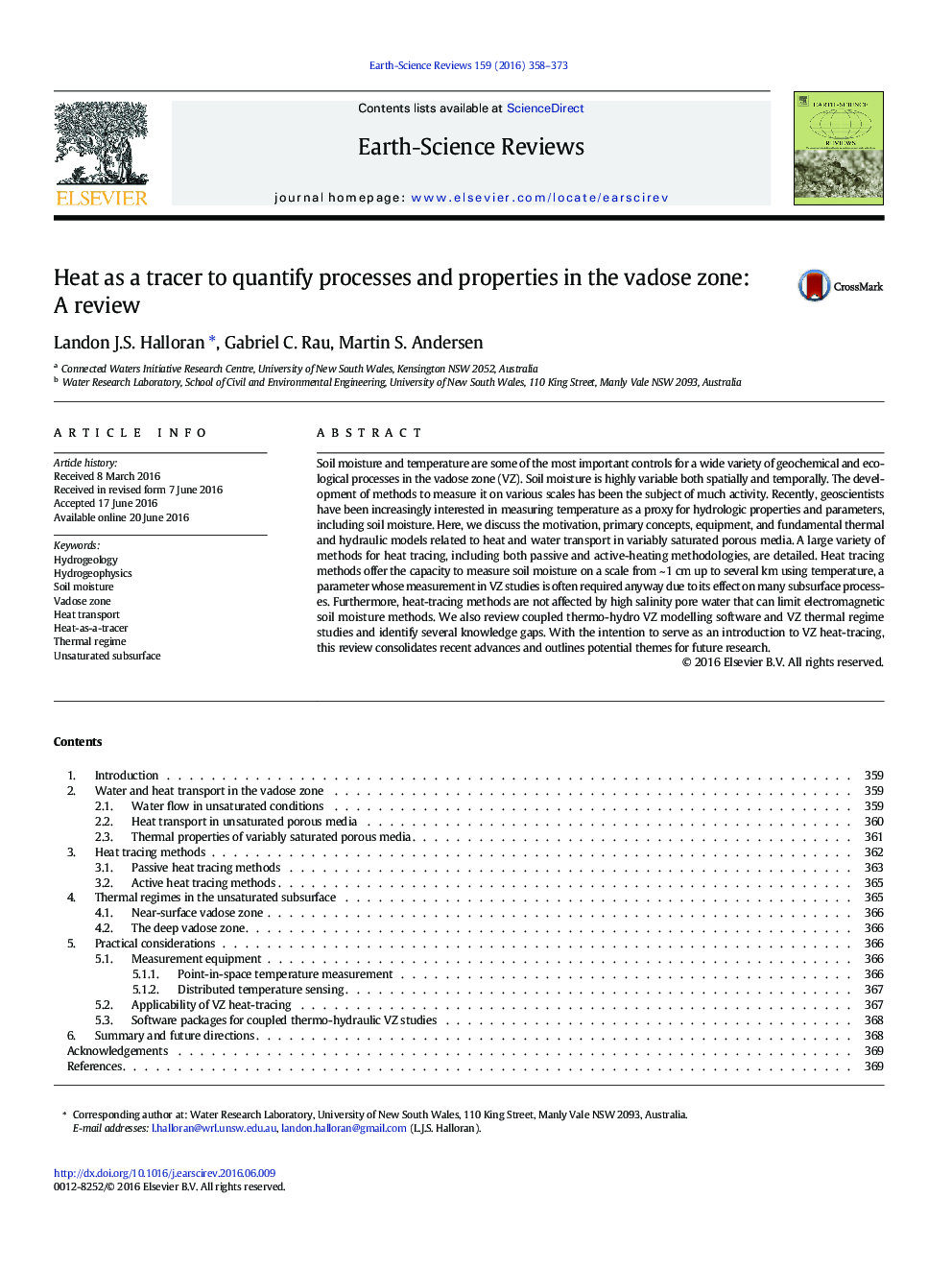| Article ID | Journal | Published Year | Pages | File Type |
|---|---|---|---|---|
| 6442861 | Earth-Science Reviews | 2016 | 16 Pages |
Abstract
Soil moisture and temperature are some of the most important controls for a wide variety of geochemical and ecological processes in the vadose zone (VZ). Soil moisture is highly variable both spatially and temporally. The development of methods to measure it on various scales has been the subject of much activity. Recently, geoscientists have been increasingly interested in measuring temperature as a proxy for hydrologic properties and parameters, including soil moisture. Here, we discuss the motivation, primary concepts, equipment, and fundamental thermal and hydraulic models related to heat and water transport in variably saturated porous media. A large variety of methods for heat tracing, including both passive and active-heating methodologies, are detailed. Heat tracing methods offer the capacity to measure soil moisture on a scale from ~Â 1Â cm up to several km using temperature, a parameter whose measurement in VZ studies is often required anyway due to its effect on many subsurface processes. Furthermore, heat-tracing methods are not affected by high salinity pore water that can limit electromagnetic soil moisture methods. We also review coupled thermo-hydro VZ modelling software and VZ thermal regime studies and identify several knowledge gaps. With the intention to serve as an introduction to VZ heat-tracing, this review consolidates recent advances and outlines potential themes for future research.
Related Topics
Physical Sciences and Engineering
Earth and Planetary Sciences
Geology
Authors
Landon J.S. Halloran, Gabriel C. Rau, Martin S. Andersen,
